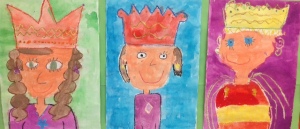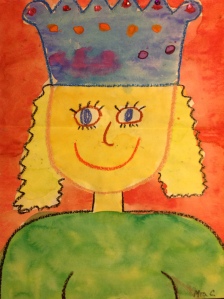 Well, we’re not sure what happened here, but it looks like everybody left for the weekend, lock, stock and barrel. We can see we’re going to need some time to put this back together.
Well, we’re not sure what happened here, but it looks like everybody left for the weekend, lock, stock and barrel. We can see we’re going to need some time to put this back together.
But we’ve got lots of other things to do on a Friday afternoon so we’re just going to allow ourselves a certain amount of time to locate the rest of the family and the furniture. At home we might use our oven timer, but here at school, we’re fortunate enough to have a Time Timer. Ours measures approximately 12 x 12 inches.
The Kindergarten love the Time Timer. They love it so much they’ll even remind us when we’ve forgotten to use it.
The Time Timer is a useful tool to help the children with their self-regulation, in much the same way as the visual schedule does, during our daily activities. It’s a visual reminder for the Kindergarten to pace themselves during whatever activity they’re involved in, as they see the time ticking down. Then the children know that we’re approaching a transition and it helps them to mentally prepare themselves for a change.
We like to make our day as predictable as possible to reduce any uncertainty or anxiety, so that the children can just enjoy learning and have fun with their friends.
We use the Time Timer in a variety of ways.
The first time we introduced the Timer was during the morning Activity Time. When there’s a new Centre, such as new play dough, everybody wants a turn. But there’s no way in 30 minutes of Activity Time that the whole class can each have a long enough turn to feel that they accomplished something. So we started turns, or “shifts,” of 12-15 minutes.
When the quiet bell of the Time Timer rings, its a signal for all of us that the group’s turn is over and another one is about to begin. A typical Activity Time has two shifts; we can accommodate eight children and we start a list of children who are interested in playing at the Centre for the next day.
Using the Timer was so successful in the morning playtime, we decided to also use it during the afternoon playtime as well. Each afternoon we have a different focus, such as Literacy Centres, Puzzles or Construction Centres. Again, we might run two or three shifts, depending upon the rest of the day’s schedule.
An added benefit of the Timer is for the children who want to finish their work despite the fact Centre Time or the work period is over, and we’re transitioning to the next activity. We like that it has removed the emotion that can come with our having to keep asking children to stop what they’re doing; instead, we can attribute it to the Timer’s bell signal that we all have to end the task.
We also use the Timer while the children eat during Snacktime and Lunch hour. It’s important that the children eat their food when they have the opportunity, to fuel their bodies so they have energy for the next part of the day. Again, it’s a visual reminder about how much time they have left to eat before they go outside to play.
You can learn more about the Time Timer here.
We’re going to begin transitioning our classroom newsletter from paper to online for our Friday blog posts during the month of June. We’re going to start exploring some different formats. If you see something you like, and as importantly, what you don’t like, please let us know. You can make a suggestion in the comment box below or just speak to us at school. Thank you for your feedback!

















